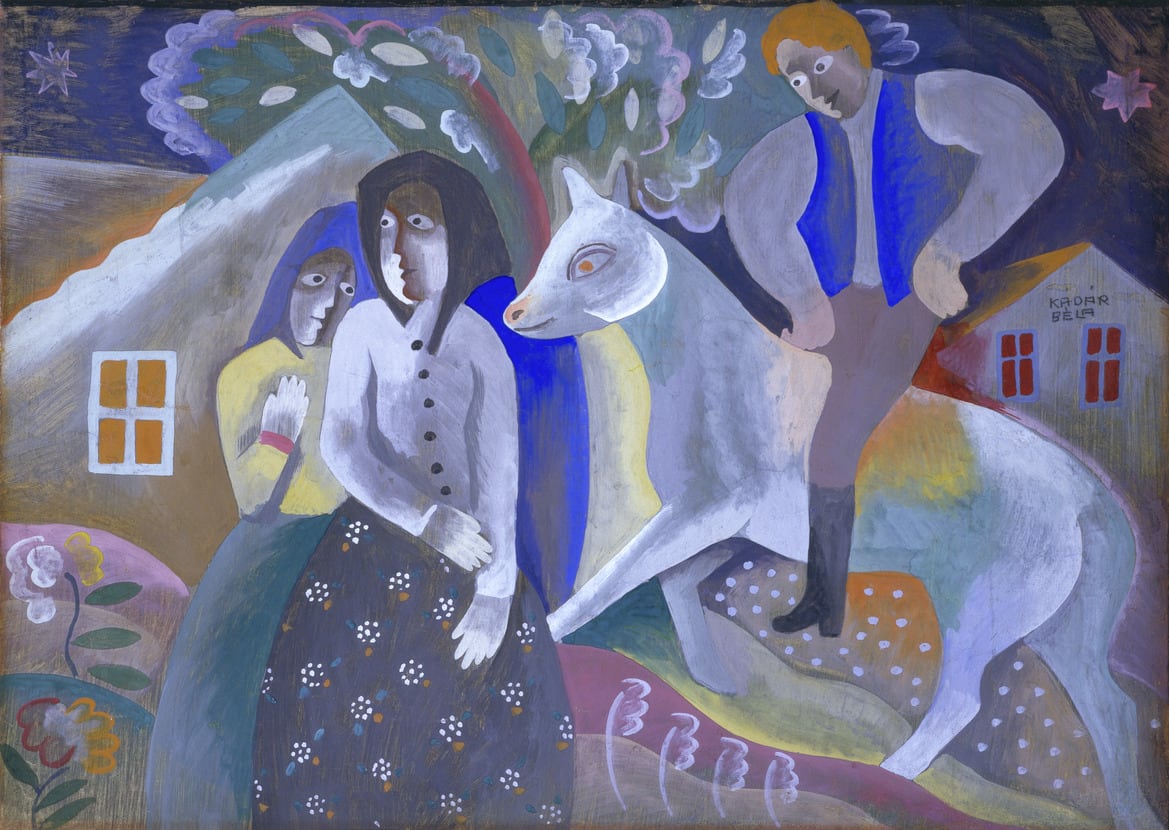
- Artist/Maker:
- Béla Kádár
- Bio:
- Hungarian, 1877-1956
- Title:
- Untitled (Longing)
- Date:
- c. 1924
- Medium:
- Goauche on paper
- Dimensions:
- 14 × 19 1/2 in. (35.6 × 49.5 cm)
- Credit Line:
- Gift of Marian Fay Levitt in memory of Elizabeth Fay
- Accession Number:
- 2007-4
- Copyright:
- © 2009 Artists Rights Society (ARS), New York / HUNGART, Budapest
Not On View
Kádár traveled to Paris at the turn of the century and resolved to become an artist. He studied at the Budapest Academy of the Fine Arts and again traveled to Paris and Berlin in 1910, becoming familiar with experiments in vanguard painting: Fauvism, Cubism, and Expressionism. In December 1923 he was given a one-person exhibition at Der Sturm gallery in Berlin and subsequently gained international recognition in Europe and the U.S.
A boy mounted on a horse confronts two young women. The architecture, the lyrical expression of organic growth, and the incandescent, complementary colors support an emotive narrative. As with many of the artist's works from the 1920s, the work treats themes of love interpreted in a visionary idiom evocative of Magyar peasant life. The dreamlike stylization of figures and animals is unified by the force of the artist's fantasy and decorative style.
Kádár's titles of the 1920s indicate specific emotional states. Although previously untitled, The Jewish Museum's painting is similar to a work of the same date in the Hungarian National Gallery where, "pining for love, a lad sits on his horse, drunk with the teasing looks of young wives." (Mariann Gergely).
A boy mounted on a horse confronts two young women. The architecture, the lyrical expression of organic growth, and the incandescent, complementary colors support an emotive narrative. As with many of the artist's works from the 1920s, the work treats themes of love interpreted in a visionary idiom evocative of Magyar peasant life. The dreamlike stylization of figures and animals is unified by the force of the artist's fantasy and decorative style.
Kádár's titles of the 1920s indicate specific emotional states. Although previously untitled, The Jewish Museum's painting is similar to a work of the same date in the Hungarian National Gallery where, "pining for love, a lad sits on his horse, drunk with the teasing looks of young wives." (Mariann Gergely).
Information may change as a result of ongoing research.